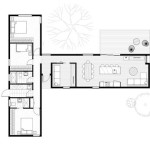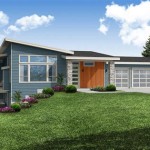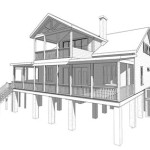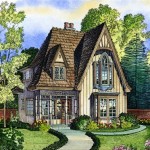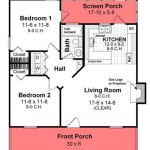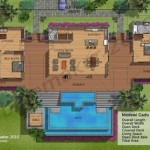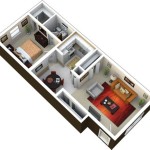Plans for small guest houses incorporate the design and construction aspects of modest-sized accommodations intended to provide temporary lodging for visitors. These plans outline the architectural elements, space allocation, and overall functionality of a guest house, typically designed to be smaller than a traditional home.
In today’s world, small guest houses are increasingly popular, often used as a source of additional income through rental or bed and breakfast operations. They offer homeowners the opportunity to utilize unused space on their property while providing comfortable and convenient accommodations for guests or extended family members.
In the following sections, we will delve into the key elements and considerations involved in designing and constructing a small guest house, including planning considerations, layout options, material choices, and essential amenities.
Effective planning is crucial for successful small guest house construction. Essential aspects to consider include:
- Zoning and regulations
- Budget and financing
- Site selection
- Layout and design
- Materials and finishes
- Amenities and appliances
- Energy efficiency
- Accessibility and safety
- Maintenance and upkeep
Addressing these factors thoroughly will help ensure a well-planned and functional small guest house that meets your specific needs and goals.
Zoning and regulations
Zoning laws and regulations are essential considerations when planning a small guest house. These laws determine the permitted uses of land and buildings within specific zones or districts. Understanding and adhering to these regulations is crucial to ensure compliance and avoid potential legal issues.
- Verify zoning classification: Determine if the property where you plan to build the guest house is zoned for residential use that allows for guest houses or accessory dwelling units (ADUs). Some areas may have specific regulations regarding the size, location, and use of guest houses.
- Review building codes: Building codes establish minimum safety and construction standards for all structures, including guest houses. These codes may include requirements for setbacks from property lines, height restrictions, and accessibility features. It is essential to familiarize yourself with the applicable building codes to ensure your plans comply.
- Obtain necessary permits: Before beginning construction, you will likely need to obtain building permits from the local authorities. The permit application process typically involves submitting detailed plans and specifications for review and approval. Ensure you have all the required permits in place to avoid delays or legal penalties.
- Consider homeowners association (HOA) rules: If the property is located within a homeowners association (HOA), there may be additional rules and regulations regarding the construction and use of guest houses. Review the HOA’s covenants, conditions, and restrictions (CC&Rs) carefully to ensure your plans align with the community guidelines.
By thoroughly researching and adhering to zoning and regulations, you can increase the likelihood of a smooth and successful construction process for your small guest house.
Budget and financing
Establishing a realistic budget is crucial for any construction project, and building a small guest house is no exception. The overall cost will vary depending on factors such as the size and complexity of the design, materials used, labor costs, and local regulations. It is essential to carefully consider all potential expenses to avoid financial surprises during the construction process.
Start by determining the total funds available for the project, including your own savings, any financing options you may qualify for, and potential income from renting out the guest house. A detailed budget should include line items for materials, labor, permits, utilities, and contingency funds for unexpected expenses. It is advisable to allocate 10-15% of the total budget for contingencies.
Financing options for small guest house construction can include personal loans, home equity loans, or construction loans. Each option has its own terms, interest rates, and repayment schedules. It is important to compare different loan offers and choose the one that best suits your financial situation and project needs. Consider factors such as the loan amount, interest rate, loan term, and any fees associated with the loan.
Once you have secured financing, it is essential to manage the project budget carefully. Keep track of all expenses and compare them to the original budget regularly. Make adjustments as needed to ensure the project stays within the allocated funds. Consider negotiating with contractors, exploring cost-effective materials, and seeking professional advice to optimize the use of your budget.
By planning a realistic budget and securing appropriate financing, you can increase the likelihood of completing your small guest house construction project successfully and within your financial means.
Site selection
Site selection is a crucial aspect of planning for a small guest house. The chosen location will impact the overall design, functionality, and enjoyment of the structure. Consider the following factors when selecting a site for your guest house:
Proximity to main house: Determine the ideal distance between the guest house and the main house. Consider factors such as privacy, convenience, and accessibility. The guest house should be close enough for easy access but far enough to provide a sense of separation and independence.
Size and shape of the lot: The size and shape of the lot will influence the placement and design of the guest house. Ensure the lot is large enough to accommodate the guest house comfortably, including any desired outdoor spaces or amenities.
Topography and drainage: Evaluate the topography of the site, including the slope and drainage patterns. Choose a well-drained area to avoid water accumulation and potential foundation issues. Consider the impact of the guest house on the surrounding landscape and take measures to minimize any negative effects.
Access and utilities: Ensure the site has adequate access to roads and utilities such as electricity, water, and sewer. Consider the cost and feasibility of extending utilities to the guest house location.
By carefully considering these factors, you can select a suitable site that meets the specific needs of your small guest house project.
Layout and design
The layout and design of a small guest house are crucial in creating a functional and comfortable space for guests. Careful planning is essential to maximize the available space while providing the necessary amenities and privacy.
- Open floor plan: An open floor plan combines multiple functional areas, such as the living room, kitchen, and dining area, into one open space. This design creates a sense of spaciousness and allows for easy flow between different areas.
- Multipurpose spaces: To maximize space utilization, consider incorporating multipurpose spaces into the design. For example, a sofa bed can serve both as a seating area and a sleeping space, while a kitchen island can double as a dining table.
- Loft design: If the height of the guest house allows, a loft design can create an additional sleeping or living area. This is a space-saving solution that can add extra functionality to the guest house.
- Outdoor living spaces: If the site permits, incorporating outdoor living spaces, such as a patio or deck, can extend the living area and provide guests with a place to relax and enjoy the outdoors.
By carefully considering the layout and design, you can create a small guest house that is both functional and inviting, providing a comfortable and enjoyable experience for your guests.
Materials and finishes
The choice of materials and finishes for a small guest house is crucial in determining its overall aesthetic appeal, durability, and functionality. Consider the following factors when selecting materials and finishes:
Exterior materials: The exterior materials of the guest house should be durable, weather-resistant, and visually appealing. Common choices include wood, brick, stone, stucco, and vinyl siding. Consider the climate and local building codes when selecting exterior materials to ensure longevity and compliance.
Interior materials: The interior materials should create a comfortable and inviting atmosphere for guests. Popular choices for flooring include hardwood, tile, laminate, and carpet. Walls can be finished with paint, wallpaper, or wood paneling. Ceilings can be finished with drywall, wood, or suspended tiles.
Finishes and fixtures: The finishes and fixtures, such as countertops, cabinets, appliances, and lighting, should complement the overall design style of the guest house. Choose durable and easy-to-maintain materials that align with the desired aesthetic and functionality.
By carefully selecting materials and finishes that meet your specific needs and preferences, you can create a small guest house that is both visually appealing and functionally sound.
Amenities and appliances
Amenities and appliances play a crucial role in enhancing the comfort and convenience of a small guest house. Carefully consider the following amenities and appliances when planning your guest house:
- Kitchenette: A kitchenette is a compact kitchen that includes essential appliances and storage space for preparing and serving meals. It typically includes a sink, refrigerator, microwave, and cooktop, allowing guests to prepare simple meals and snacks.
- Bathroom: A well-equipped bathroom is essential for guest comfort and privacy. Consider including a toilet, sink, shower, and adequate storage space for toiletries and linens.
- Heating and cooling system: Ensure the guest house has a reliable heating and cooling system to maintain a comfortable temperature for guests throughout the year. Options include central air conditioning, heat pumps, or mini-split systems.
- Wi-Fi and connectivity: In today’s digital age, Wi-Fi and reliable internet connectivity are essential amenities for guests. Provide a stable Wi-Fi network and consider additional features such as smart TVs or streaming devices for entertainment.
By incorporating these amenities and appliances into your small guest house, you can create a comfortable and inviting space that meets the needs of your guests and enhances their overall experience.
Energy efficiency
Energy efficiency is a crucial aspect of modern construction, and small guest houses are no exception. Incorporating energy-efficient features into your guest house design can significantly reduce operating costs, increase sustainability, and enhance the overall comfort and well-being of guests.
One key area for energy efficiency is the building envelope, which includes the walls, roof, windows, and doors. Proper insulation and air sealing are essential to minimize heat loss during winter and heat gain during summer. Consider using energy-efficient insulation materials, such as fiberglass, cellulose, or spray foam, to reduce thermal transfer. Additionally, ensure that all windows and doors have tight seals to prevent air leakage.
Energy-efficient lighting is another important factor. Replace traditional incandescent bulbs with LED or CFL bulbs, which consume significantly less energy while providing comparable or even better illumination. Consider incorporating natural light into the design by maximizing window placement and using skylights to reduce the need for artificial lighting during daytime.
Heating and cooling systems account for a large portion of energy consumption in guest houses. Opt for energy-efficient HVAC systems with high SEER (Seasonal Energy Efficiency Ratio) ratings for cooling and high HSPF (Heating Seasonal Performance Factor) ratings for heating. Regular maintenance of HVAC systems, including filter changes and professional inspections, can also improve efficiency and extend their lifespan.
By incorporating these energy-efficient measures into the design and construction of your small guest house, you can create a comfortable and sustainable living space that minimizes energy consumption, reduces operating costs, and contributes to a greener environment.
Accessibility and safety
Accessibility and safety are paramount considerations in the design of any building, and small guest houses are no exception. Ensuring that the guest house is accessible and safe for all users, regardless of age, ability, or disability, is essential for creating a welcoming and inclusive environment.
One key aspect of accessibility is providing level access throughout the guest house. This means eliminating steps and other barriers that could hinder mobility. Consider installing ramps or gradual slopes for any changes in elevation, and ensure that doorways and hallways are wide enough for wheelchairs and other mobility aids to pass through comfortably.
Safety features are also crucial for guest houses. Install smoke and carbon monoxide detectors in all sleeping areas and common spaces to alert occupants to potential hazards. Additionally, consider installing grab bars in the bathroom and other areas where there is a risk of slips or falls. Adequate lighting both inside and outside the guest house is also essential for safety and security.
Fire safety is of utmost importance. Ensure that the guest house meets all applicable building codes and fire safety regulations. This may include installing fire sprinklers, fire extinguishers, and fire alarms. Regularly inspect and maintain all fire safety equipment to ensure it is in good working order.
By incorporating these accessibility and safety measures into your small guest house design, you can create a space that is welcoming, comfortable, and safe for all guests.
Maintenance and upkeep
Regular maintenance and upkeep are essential to ensure the longevity and functionality of your small guest house. A well-maintained guest house will provide a more comfortable and enjoyable experience for guests while protecting your investment.
- Regular cleaning: Keep the guest house clean and tidy to maintain a welcoming environment for guests. This includes cleaning surfaces, vacuuming or sweeping floors, and emptying trash cans regularly.
- Exterior maintenance: Inspect the exterior of the guest house regularly for any signs of damage or wear and tear. Repaint or touch up the exterior paint as needed to protect the structure from the elements. Check the roof for any missing or damaged shingles and repair them promptly to prevent leaks.
- HVAC maintenance: Have the heating and cooling system inspected and serviced by a qualified technician at least once a year. Regular maintenance can help extend the lifespan of the system and ensure it is operating efficiently, reducing energy costs and providing optimal comfort for guests.
- Appliance maintenance: Regularly clean and maintain appliances in the guest house, such as the refrigerator, stove, and microwave. Follow the manufacturer’s instructions for proper care and maintenance to ensure they are functioning properly and safely.
By following these maintenance and upkeep tips, you can keep your small guest house in good condition, extending its lifespan and providing a comfortable and enjoyable space for guests.










Related Posts

